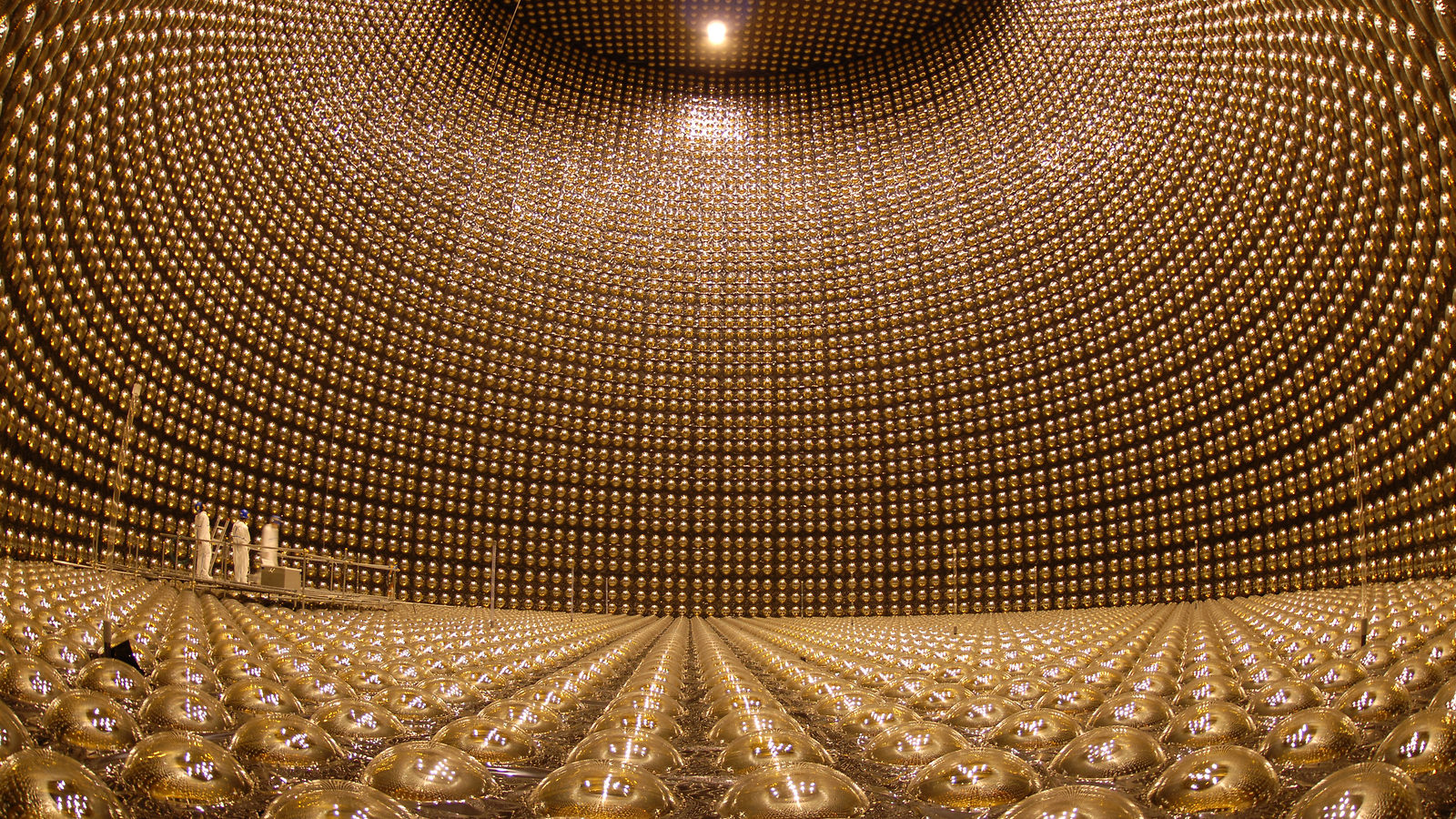Scientists are increasing the fervour at which they study one of the most elusive particles in existence – the neutrino. But to catch a glimpse of this elusive particle, you need a very carefully designed instrument.
The neutrino is perhaps the least well understood of the fundamental particles, and physicists believe they could hold the answer to some very big questions, such as “What is dark matter?” and “Why is there so much more matter than antimatter?”arge experiments are being built around the world to discover more of these mystery particles.
Experiments to probe the neutrino’s properties do so by producing an intense beam of neutrinos aimed at another facility hundreds of kilometres away which can detect these neutrinos. The T2K experiment and HyperKamiokande experiment in Japan, as well as DUNE at the LBNF facility in the USA (currently under construction), are the leading experiments of this type, both supported by STFC.

Layout of the T2K Experiment where the neutrino beam travels from the east coast to western Japan (Credit: the T2K experiment, http://t2k-experiment.org)
These experiments rely on data from detecting neutrinos, but the neutrino interacts with matter very rarely – trillions of them pass uninterrupted through your body every second. Huge detectors are needed to maximise the odds of interaction. To further increase the odds, a higher intensity source of neutrinos is needed. This is a significant technical challenge, and much of the burden falls on the beam target.
The High Power Target Group in the Technology Department at RAL designs and creates the targets which produce the neutrino beams for experiments such as the T2K experiment and the LBNF target for DUNE, which is currently in its’ prototype stage. Both these experiments have very similar targets with subtle differences in the concept and materials used. The targets are a vital step in the process of making a neutrino beam.

Kamioka Observatory, Institute for Cosmic Ray Research, The University of Tokyo
This process begins with accelerating protons which are focused by a magnet system in the direction of the detector. These protons are fired at a graphite target which produces a range of secondary particles. These secondary particles, specifically pions, decay to produce a neutrino beam. An ‘ideal’ target instantaneously produces the maximum amount of the right sort of particles, often in the form of a point source. However, the smaller the point source, the more intense the heating and radiation damage of the target material. The proton beam for the DUNE experiment will slam 1 megawatt of power into the target: equivalent to one thousand boiling kettles! Fortunately, only a few percentages of this huge power is deposited in the form of heat, since most of the energy is taken away by pions.
While the actual target itself is relatively light, the addition of 5 to 6 metres thick walls of steel and concrete to reduce the radiation produced to manageable levels makes the target station incredibly heavy overall. Graphite is an ideal material as it becomes stronger the hotter it is, and its’ temperature is cooled by a closed system of helium gas around it. All parts of the target must be carefully engineered to be replaced easily to account for the high radiation and temperature damage from just a single microsecond long pulse. There is a small margin for error when putting these expensive target parts together, and the consequence of failure is huge. A skilled team of experts varying from material scientists to engineers are important for experiments like these to succeed. The RAL High Power Target Group, consisting of 10 people, are responsible for making these targets and handling the challenges of maintaining the target throughout the experiment’s operation.
“These targets have a very hard life. Imagine how intense the energy must be that the temperature of graphite can jump by a hundred degrees instantaneously, which produces a huge blast of radiation and heat that the target must withstand,”, said Chris Densham, the leader of the High Power Target Group. Over 15 years ago, Dave Wark, the HyperKamiokande (HK) group leader, got in touch with Chris Densham to work on the T2K experiment. The T2K experiment is funded as a result of winning a bid by STFC supporting the original funding proposal and with ongoing maintenance and operations support budget. Most experiments require many proposals to be written in hopes that any interested party would fund the experiments. For example, the LBNF/DUNE project’s funding involves team writing and defending proposals through full STFC peer review process. The perseverance in submitting proposals to get more funding is paramount to further increase the beam power and improve materials testing to bring us a step closer to solving the mysteries of the Universe.
For more information about the RAL contribution to the T2K experiment, visit the Technology website.
